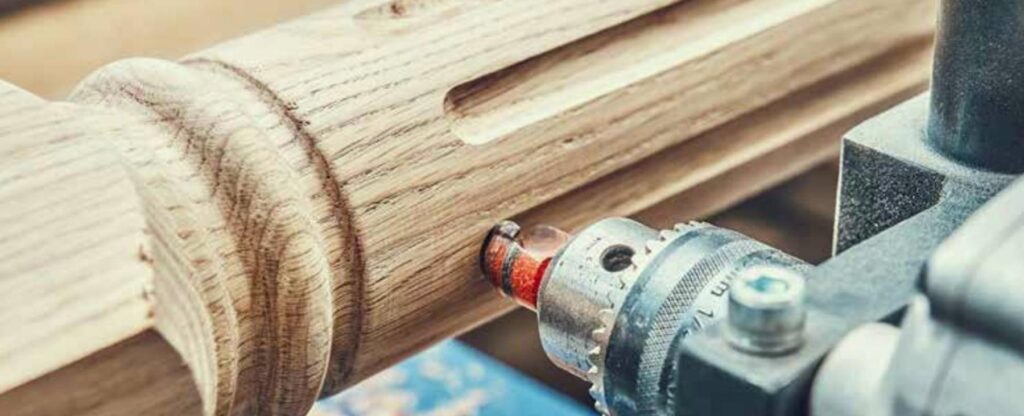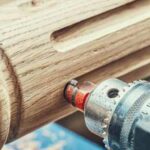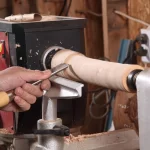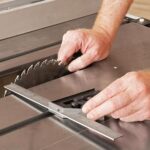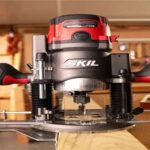Woodworking is an enjoyable and rewarding hobby for millions of people. However, working with power tools and machinery comes with some common problems that every woodworker should be aware of. In this 2024 guide, we’ll explore some of the most Common Issues with Woodworking Machinery.
Table Saws
Table saws are the heart of most home workshops. These versatile tools have a spinning circular saw blade that protrudes up through an opening in the table top. This allows you to make rip cuts (cutting with the wood grain) and cross cuts (cutting across the grain).
Some common table saw issues include:
- Blade Wobble – If your cuts seem off or the blade is vibrating intensely, you likely have blade wobble. This occurs when the arbor nut underneath the blade is loose or the blade itself is warped. Try tightening the arbor nut first. If that doesn’t work, you may need to replace the blade.
- Fence Alignment Problems – An essential accessory for table saws is the rip fence. This metal bar runs parallel to the blade and ensures straight cuts. If it gets knocked out of alignment, your cuts will be crooked. Re-align your rip fence periodically to prevent this.
- Dust Collection Failures – Most table saws have a dust port to connect to a vacuum for collecting sawdust. Over time, these ports can get clogged with debris. Check them regularly and clean out any obstructions. Improving dust collection makes for a cleaner and safer shop.
Miter Saws
Miter saws use a circular saw blade mounted on a pivoting arm to make crosscuts and angled miters. Common miter saw issues include:
- naccurate Cuts – With the miter and bevel adjustments on a miter saw, they can lose their calibration over time. This leads to inaccurate cut angles. Most miter saws have stops at common angles (45 degrees, 30 degrees, etc). Check these stops with an angle cube to recalibrate if necessary.
- Blade Wobble – Much like a tables saw, blade wobble can also occur on miter saws from an unbalanced or warped blade. Replace damaged blades immediately.
- Fence Misalignment – For straight cuts, a miter saw depends on the fence being perfectly square and parallel to the blade. If out of alignment, cuts will be skewed. Realign the fence using a combination square.
Jointers
Jointers are used to flatten and straighten out lumber by passing it over a spinning cutter head. Some issues that may arise include:
- Nicked or Chipped Knives – The cutterhead on a jointer contains hardened steel knives that spin at high speeds. If these knives get nicked or chipped, it can leave visible marks on your wood. Replace damaged knives to ensure clean cuts.
- Fence Out of Alignment – For proper milling, the jointer fence must sit perfectly parallel with the cutter head. If it gets bumped out of alignment, you’ll get tapering issues. Realign the fences using shims.
- Improper Depth of Cut – Taking too deep of a cut on a jointer increases risk of kickback and machine strain. Set the depth to only take off 1/32” or less per pass. Remove just enough material to flatten the surface.
Planers
Planers use rotating cutting blades to shave uniform thickness off a piece of lumber. Common planer problems involve:
- Snipe – Snipe occurs when deeper cuts get taken at the beginning and end of a board as it exits the planer. This leaves indentations on the wood. Using planer boards or keeping pressure on the wood as it feeds through can reduce snipe.
- Tear Out – If the planer blade knives are dull or the wood has knots, you may get splintering or chipping as it passes through. Ensuring sharp blades and avoiding problem wood areas minimizes tear out.
- Roller Marks – Most planers have rubber infeed and outfeed rollers that advance the lumber. If debris builds up on these rollers, it can leave light marks on the wood surface. Keep the rollers clean for smooth feeding.
Preventing Common Woodworking Machinery Issues
While woodworking machinery problems inevitably occur with frequent use, there are some preventative things you can do to minimize issues:
- Keep Blades Sharp & Clean – Sharp and debris-free blades hugely reduce many problems like wood tear out and wobble.
- Align/Calibrate Components Regularly – Fences, miter gauges, blades and other parts fall out of alignment over time. Periodically realign them.
- Adjust Feed Speed Appropriately – Forcing wood through a machine too quickly increases chances of snipe, tear out and safety issues.
- Clear Dust Build Up & Debris – Built up sawdust and debris causes drag, roller marks and performance issues.
- Consult Manuals & Manufacturer Guidelines – Your machinery manual will outline recommended care, alignment processes, speeds and more.
By following some basic preventative guidelines and being attentive to early signs of problems, you can avoid many common woodworking machinery headaches. Pay attention to warning signs like wobble, vibration, odd noises and crooked cuts – then make the necessary adjustments, part replacements or alignments. Investing some periodic maintenance into your cherished woodworking machines will keep you happily sawing away in your workshop. I sincerely hope you find this “Common Issues with Woodworking Machinery Guide in 2024” article helpful.

